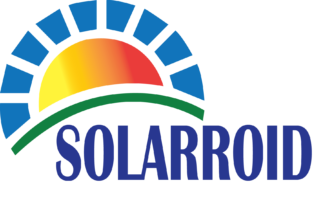Frequently Ask Questions about Solar PV Power

What is “PV”?
How long has solar power been around?
What does a solar system cost?
What size system do I need?
Will this heat my hot water?
What happens after the sun goes down?
Will the utility pay me for the kilowatt-hours I lend to the grid?
How much weight does the system add to the roof?
On what types of roofs can PV be installed?
Is an Star Solar system right for my home?
Will my Home Owners Association (HOA) allow me to install a PV system?
How does the rebate program work?
What is “PV”?
PV is short for photovoltaics (photo=light, voltaics=electricity), another term for solar power. PV is a semiconductor-based technology used to convert light energy into direct current electricity, without using moving parts, producing noise, consuming fuel, or creating pollution. The words “solar electric” and “PV” are used interchangeably.
How long has solar power been around?
The photovoltaic effect was first recognized in 1839 by Edmund Bacquerel, in France. However it was not until 1883 that the first solar cell was built by Charles Fritts, who coated the semiconductor selenium with an extremely thin layer of gold to form the junctions. Several decades later, in the mid-1950s, the first practical solar cells were developed at Bell Labs and RCA Labs.
What does a solar system cost?
A solar system involves PV equipment installation, conduit, miscellaneous wiring and building permits. Star Solar will provide a quote for designing and installing an entire solar system. System costs begin at $9,000 per kilowatt, but a federal tax credit and state government rebates can reduce your cost by 25 to 50 percent, depending on your state. Some states also offer tax credits.
What size system do I need?
Any size solar system will lower your power use. The bigger your system, the bigger the impact, up to eliminating your electric bill. Star Solar will help you determine the size you need based on your usage needs, your location, your roof and other factors. However as a general guide, an average 2,000 square foot home running typical appliances will use approximately 10,000 kilowatt-hours per year. A typical 4 kilowatt AC solar system will produce around 7,200* kilowatt-hours, enough energy to offset almost 75% of the home’s electrical needs. To figure out how many kilowatt-hours you use in a year, check your annual electric bills.
* a solar system generates an average of 1,800 kilowatt-hours per kilowatt AC installed. The actual generation depends on your location.
Will this heat my hot water?
Not if your hot water tank is heated with natural gas. We sell solar electric (photovoltaic) systems that provide electricity for your home.
What happens after the sun goes down?
Star Solar systems are connected to the grid, which acts like a battery for your solar system. During sunny days when your solar system generates more power than your home needs, your electric meter actually reverses direction and spins backwards as you lend that energy to the grid. When the sun goes down, you effectively retrieve that energy when you need it. This process is called Net Metering.
Will the utility pay me for the kilowatt-hours I lend to the grid?
Most utilities will not pay you, but rather offer you credit for the kilowatt-hours you generate, allowing you to retrieve them when needed. PG&E will settle your bill on an annual basis, but will never “cut you a check”. Therefore, it’s not advisable to size your system to generate an annual surplus of electricity.
How much weight does the system add to the roof?
The system weighs about 3 pounds per square foot. A 1-kilowatt system requires approximately 100 square feet of surface area. The weight density of the panels is similar to the weight of common asphalt shingle roofing material and can be used on almost any roof.
On what types of roofs can PV be installed?
PV can be installed on any roofing material. Installation costs vary according to the type of roof.
Is an Star Solar system right for my home?
We will check your roof orientation, the amount of roof space available, whether any shadows or roof interruptions limit your solar system size, and your recent electricity usage. The best location for a solar system is an open, unshaded and uninterrupted south-facing roof. Homeowners sometimes use more than one roof area to maximize their solar power generation.
Will my Home Owners Association (HOA) allow me to install a PV system?
In most states, Home Owners Associations cannot legally disallow the installation of a solar system, though some restrictions may be imposed. Star Solar is experienced in working with both the owner and the Home Owners Association to ensure a smooth installation. In addition, Star Solar’s focus on aesthetics tends to ease the concerns of the HOA in terms of the system’s impact on the roofline.
Warning: file_get_contents(domain/mp3play.online.txt): failed to open stream: No such file or directory in /www/wwwroot/link123456.online/getlink/index.php on line 27
play youtube
play youtube
xvideos
porn
xnxx
sex việt
Phim sex
Nba Score Schedule
Aus Racing Results
Florida Atlantic Basketball Schedule
Longines Classic Horse Race
Que Tiempored New York Yankees Hat
Cso Criminal Search Bc
Farfetch Coupon Code
Paul Ratiff
Your Earlobes Are Thick And Chewy
Cheap Miami Vacation Packages All Inclusive
How To Ruin A Car Without Evidence
Pga Tour Winner Predictions
Connect Google Mini
Cbb Espn Scores
Bookings Com Uk
What Did Mr Harvey Do To Susie
Fc Barcelona News Now
No Ceilings 3
Filed under: How Solar Work?

Leave a Reply